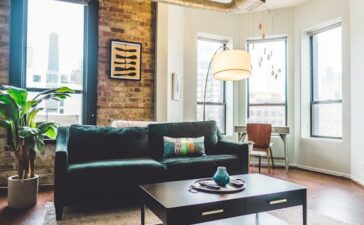If there’s one thing you should know about getting a professional-looking paint job, it’s this: Preparation is crucial. There’s no way the end result will seem as sharp and well-done as this could without good inner paint prep. Take these steps to create a smooth and professional-looking paint finish.
Interior Paint Preparation
Take a mental walkthrough of an interior paint preparation project before getting started. Determine the possible issue areas and devise a solution. Or, even better, two solutions in case the first round fails. You shouldn’t have to have every aspect stitched up right away; that will happen as the preparation progresses.

When you’re in the thick of things, however, 10 minutes of foresight can save you hours of frustration. Make a list of important items like painting tools, brushes, microfibre roller and more as you put up your painting job plan to generate a workable checklist. This list will come in handy when working on the project. Similarly, when the weather heats up, a spring house maintenance checklist is created.
Furniture Protection: How to Prepare for Painting
You’ll probably have to move furnishings out of the path at some point throughout the inside paint prep procedure unless you’re operating in an empty space. If you ignore this step, you risk harming your furniture or finding the rough imprint of a chest or bed framework on the wall when you redesign.
In restrooms, a similar issue occurs when the wall colour abruptly stops at the edge of the toilet tank. Items should be moved away from the wall and into the middle of the room, or they should be removed entirely. Painter’s cloth should be used to protect the furnishings. Also, identify the things that are most susceptible to paint damage, such as those with fabric furnishings, and take extra precautions with them.
Wall Plate Removal as a Preparation for Painting
You’ll be able to view all of the power switch and socket covers once the furniture has been moved away from the sides. They, as well as any ventilation and return covers, must be removed. Why is it important to prepare the interior for painting?
Although you can paint across or about these things, the visual distinction between the walls and the covering plates will be reduced. This gives these goods, which are typically extremely visible, a tattered, unprofessional appearance. In the future, if you need to replace an electrical cover, a paint-covered socket can cause the paint or drywall top paper to rip and come away.

Scaffold and Ladders: Painting Preparation
You should have adequate platform support when you’ll be repainting anything higher than a foot or so above your head. This will be as basic as a rope ladder for most DIY inside paint prep chores. However, if you’re working on a stairwell or a domed great room, you should consider erecting a scaffold system.
To avoid losing your damp edge while paint, set up the scaffolding until you need it. It’s critical to take your time putting up scaffolding and double-checking its stability. More specific advice and procedures can be found in How to Work with Scaffolding Safely.





